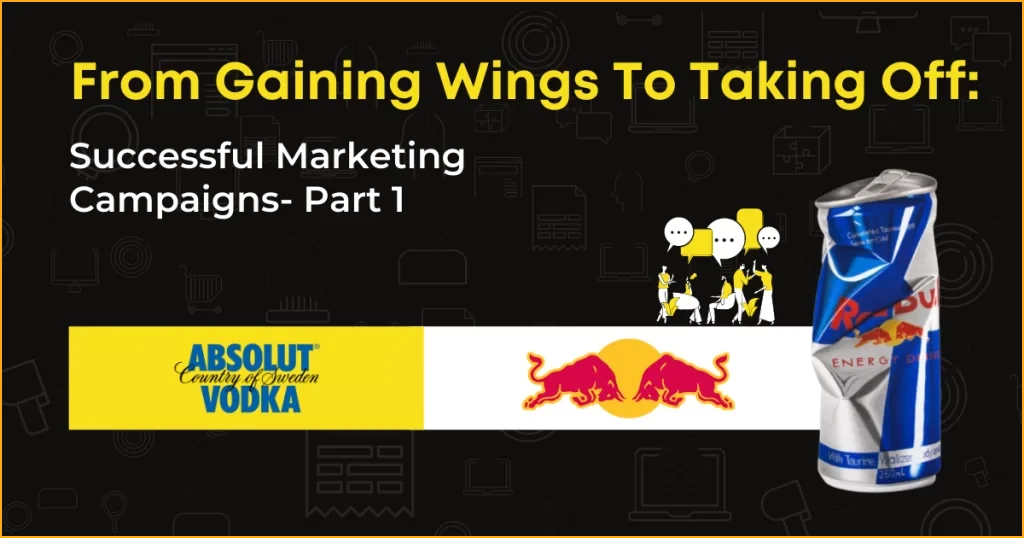From Gaining Wings to Taking Off: Successful Marketing Campaigns- Part 1

Ever wondered what makes some marketing campaigns last, overcoming the test of time? Well, in the words of Rory Sutherland, vice-chairman of Ogilvy Group, real success comes from defying everyone else’s logic. Here are two of the four campaigns that marked the advertising world because of their out-of-the-box thinking:
Absolut-ly brilliant: A campaign with over 1500 ads!
Absolut Vodka was initially sold just on the borders of Stockholm and its competition was limited to the monopolization of the state government on liquor sale. After being sold solely in Sweden for over a century, Absolut [Absolut Rent Brännvin] decided to go global and compete with big names like Smirnoff. It was a bold move and for them to stand out, they needed to be different. Part of the challenge that came with standing out was that they had little to no branding and their bottle design was very understated. Their only USP was purity.
Absolut sought the expertise of one Gunnar Broman, a well-known marketer in Stockholm. Broman started a campaign that ran for 25 whole years with more than 1500 ads and led Absolut straight to success.
“At a meeting in New York with the top creative team from ad agency N.W. Ayer ABH International, Mr. Broman presented five different concepts for a Swedish vodka. In what would later become a familiar pattern, the suggestion that met with the most extreme reaction—both positive and negative—was Absolute Pure Vodka.” – Adage
The genius campaign by Gunnar Broman seamlessly arranged the now-signature bottle in everyday scenarios with clever puns. With this strategy, Absolut became much more than just another vodka you can buy – they turned it into an experience.
Moving beyond an experience, the campaign was so intricately strategised that even though the campaign ran globally, their ads often had local elements to help people feel connected to the brand.
“The hero is the bottle. The bottle is the star.”- Wharton University.












Red Bull: How it got wings by ending up in the trash!
The story of Red Bull started when Dietrich Mateschitz, an Austrian marketing director, discovered a beverage to boost performance and concentration in Bangkok. Energy drinks were mostly unknown in the western world. Mateschitz decided to take advantage of this opportunity. His major challenge? The market was saturated with numerous drinks. And Red Bull was even more expensive than the most popular drink of the time- Coca Cola. Their other problem was that its taste was not widely liked. The research agency that conducted test runs had never seen a worse reaction to any other proposed product.
Their way to heights came through the Ogilvy group who followed the recipe of Sutherland’s success. To everyone’s bewilderment, the agency ordered thousands of empty cans of the beverage. They filled the trash cans in public areas to the brim to create the illusion of demand.
They didn’t sell a product- they sold a fantasy, an experience, played on what we would call FOMO or ‘fear of missing out’ in today’s world (before the concept even existed). This kind of marketing is called Anti-marketing- the deviation from traditional marketing strategies and techniques.


Comments are closed.